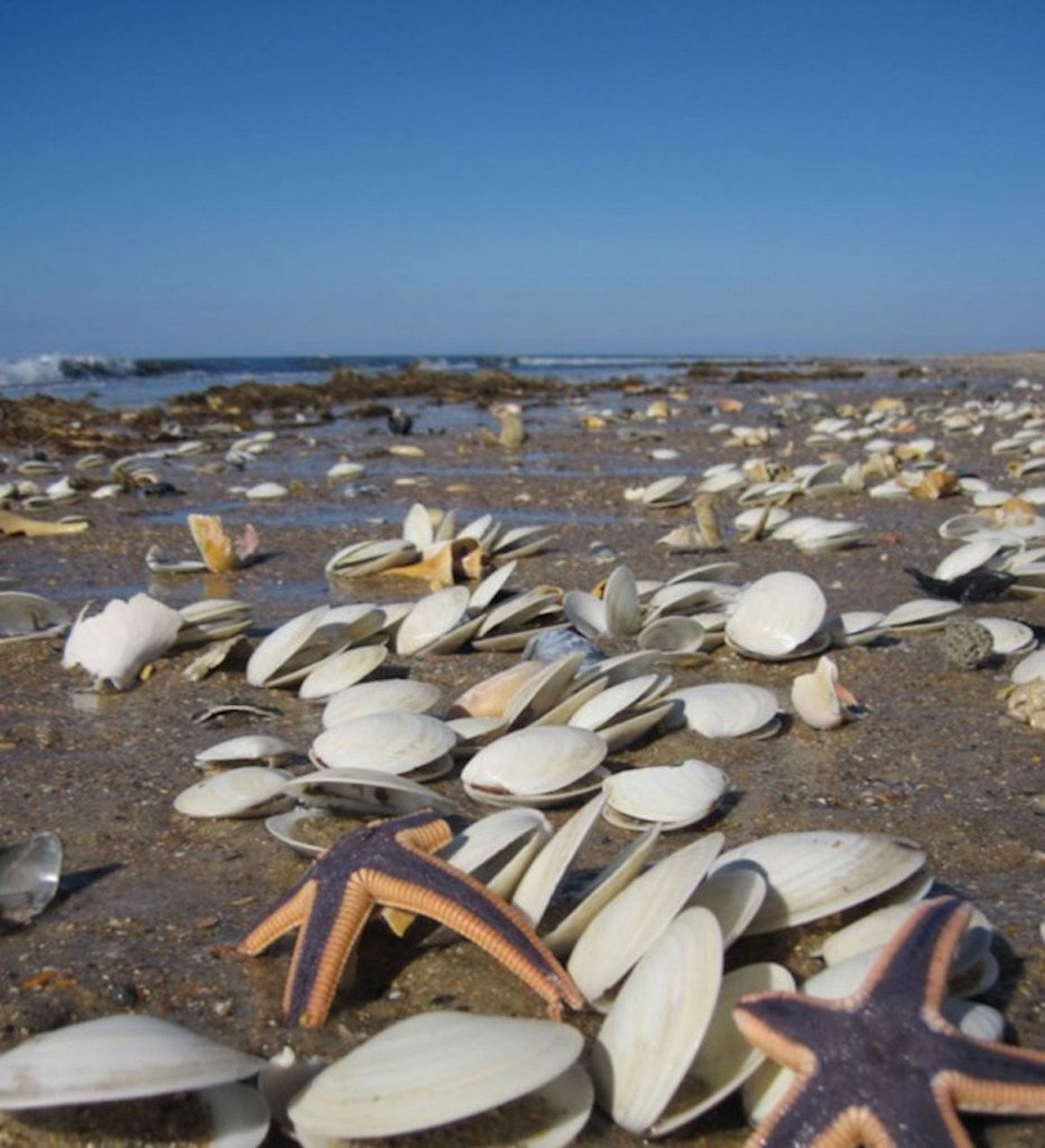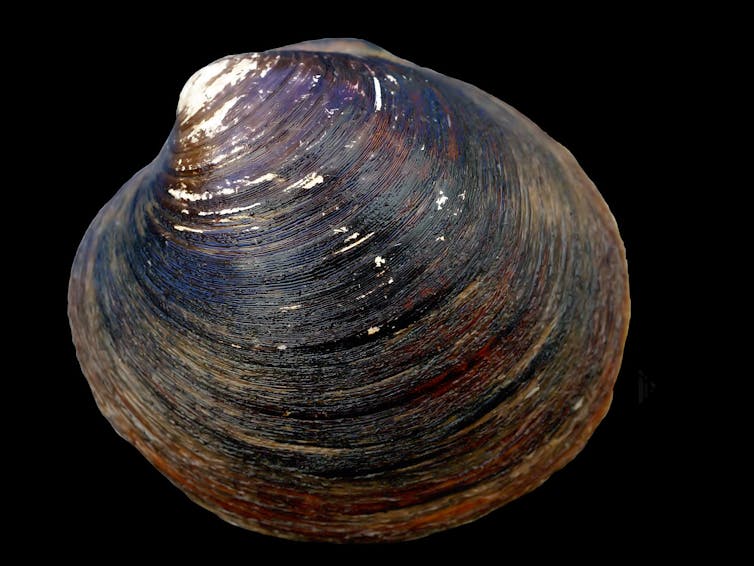Ming clams, glass sponges, when life crosses the millennia
Climb aboard a time machine to catch a glimpse of a prehistoric mammoth, or travel back through the centuries to watch Leonardo da Vinci at work in his Amboise workshop... A very human fantasy, but one that can be fulfilled in rare circumstances by observing some of today's living organisms from ancestral times.
Simon Galas, University of Montpellier

But first, how can we give an age to a species whose extreme longevity we suspect? Some of them can be, thanks to a special structure that makes up their body, or a particular feature of their environment. Such is the case of the Arctica islandica clam. We had to wait almost 136 years for scientists to discover its secret.
The Ming clam
It all began in the early 2000s with a study of past climates. The researchers' idea was to gather information on the chemical composition and water temperature of ancient oceans. But how? These paleoclimatologists used clams from the Kiel Museum that had been collected during an oceanographic expedition around Iceland in July 1868, and then stored in drawers in the Kiel Museum in Germany. One of these clams is called Arctica islandica.
In 2004, the research team decided to examine these clams with the aim of learning more about past changes in our climate. For, like tree rings, clams expand their shells every year, leaving a visible trace. By combining analysis of these growth marks with measurements of the chemical composition of their shells, scientists were surprised to find that the age of this clam was 373 years. A clam contemporary with several Kings of France, including Charles VIII de Valois, François1er, Henry IV, Louis XVI and even Napoléon III. Better still: in 2006, the discovery of another specimen with an estimated age of 405-410 years off the coast of Iceland earned it the name "Ming", in reference to the dynasty of emperors reigning in China from the 14th to 17th centuries.

Hans Hillewaert/Wikipedia, CC BY-SA
Since this fortuitous discovery, individuals as old as 500 years have been identified. This extreme longevity might seem astonishing, and hard to match or even surpass... In fact, it's nothing of the sort! In 2004, the oceanographic exploration submarine Pisces V of the American NOAA agency and the Hawaii Undersea Research Laboratory took coral samples off the coast of Hawaii at a depth of between 400 and 500 meters. Two species of coral, frequently plundered for jewelry, are particularly sought after: Gerardia sp. and Leiopathes sp. After analysis using a new carbon-14 dating technique, the results are in. These coral species are 2,742 years old for Gerardia sp. and 4,265 years old for Leiopathes sp. respectively!
These corals are a testament to the past, and their increasing fragility in the face of recent climate change makes them a useful sentinel for tracking climate change and variations in sea temperatures. But do these organisms represent the upper limit that living animals can reach in terms of longevity? Perhaps not!
An 11,000-year-old glass sponge

Hermann Ehrlich, CC BY
In 1986, while dredging in the East China Sea at a depth of 1,100 meters around Okinawa, an expedition of German, Swiss and Chinese oceanographers caught three specimens of a very special sponge called Monorhaphis chuni. This species, also known as the "glass sponge", is the only member of its family. It lives on the ocean floor, which, like the abyss, is characterized by a total absence of light, extreme cold and high pressure. As it grows, the glass sponge generates a kind of stalk, a spicule, composed of calcium and magnesium, which can reach almost 3 meters in length. This is a kind of long, thin, flexible thread resembling fiberglass, which enables the sponge to anchor itself to the seabed. Chemical analysis (4) of this flexible rod has made it possible to define the age of this sponge, which is estimated at... 11,000 years! In a more recent study, samples of this species of sponge, fished in the East and South China Sea at depths of between 1,110 and 2,100 metres, revealed, after chemical analysis of the silica and germarium contained in the several-metre-long spicule, an estimated age of 17,000 years...
It has been proposed that the information contained in this flexible stem, which grows every year, could serve as a paleo-environmental archive for the entire Holocene geological period (which began 10,000 years ago and continues to this day). The analysis of this spicule makes it possible to define the conditions prevailing in the ocean during the 11,000-year period, as well as to date any changes in temperature and water composition that may have occurred. This type of living organism is obviously a godsend for those trying to find traces of climate and biogeochemical changes in the past. They are literally a fantastic opportunity to go back in time.
What is the secret of these organizations? Few studies are available. But in the case of the multi-centennial clam, its great age may be linked to its ability to protect itself and eliminate oxidative damage. These defenses delay free radical damage to their DNA or proteins. It is possible, however, that these organisms use other mechanisms to support their longevity.
Reawakening life from the depths of time
Another characteristic of longevity is the ability to "go to sleep". There are some rare organisms capable of remaining in a state of slowed-down or suspended life, only to awaken when conditions allow. To study them and give them an age, we need to look at their environment.
Between 2002 and 2015, a team of Russian scientists took boreholes in the permafrost of two Siberian regions. The scientists carbon-dated the layers in which they were exploring. They discovered frozen worms at a depth of 3.5 meters in the frozen ground. After careful cultivation, they succeeded in reawakening two species of worms that produced offspring. These two species(Panagrolaimus and Plectus) of frozen worms were respectively 32,000 and 42,000 years old.
Another "awakening": in "Death Valley", on the border between Nevada and California, geologists drilled into soil layers corresponding to ancient salt lakes dating back 9,000 to 3,000 years. In salt crystals, they noticed inclusions that revealed microscopically tiny sticks 0.005 millimetres long.

provided by the author, CC BY
After dissolving the salt crystals in suitable culture media and waiting a few months, they were surprised to see the cultures turn cloudy, attesting to the presence of organisms. These were, in fact, Archea that had just woken up after more than 42,000 years' sleep in salt crystals. Archaea may look like bacteria, but they're very different.
Do you dare taste a centenarian?
Dating the living also means knowing what's on our plates. Gourmets, did you know? Determining the age of a lobster is difficult, as the technique for doing so has only recently been developed. Researchers have discovered that teeth located in the lobster's stomach can attest to its age. And the estimates made indicate that the American species Homarus americanus can live for more than a hundred years. Two anecdotes tell of a 132-year-old lobster that was released after spending nearly 20 years in the aquarium of a restaurant on Long Island near New York, and another approaching 100 years old that was rescued from the pan of a Canadian restaurant by a generous donor. So curb your appetite!![]()
Simon Galas, Professor of Genetics and Molecular Biology of Aging, CNRS - Faculty of Pharmacy, University of Montpellier
This article is republished from The Conversation under a Creative Commons license. Read theoriginal article.